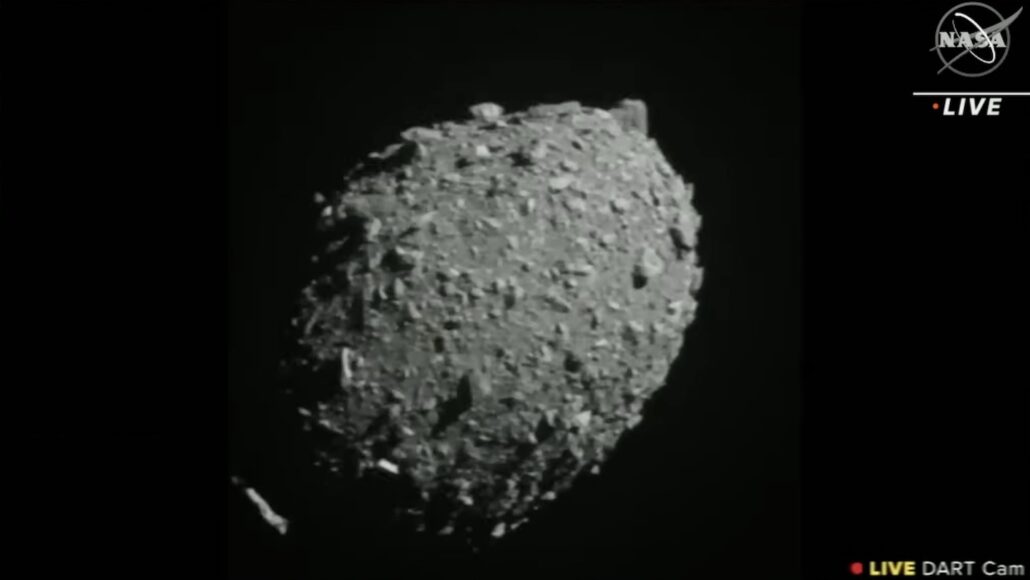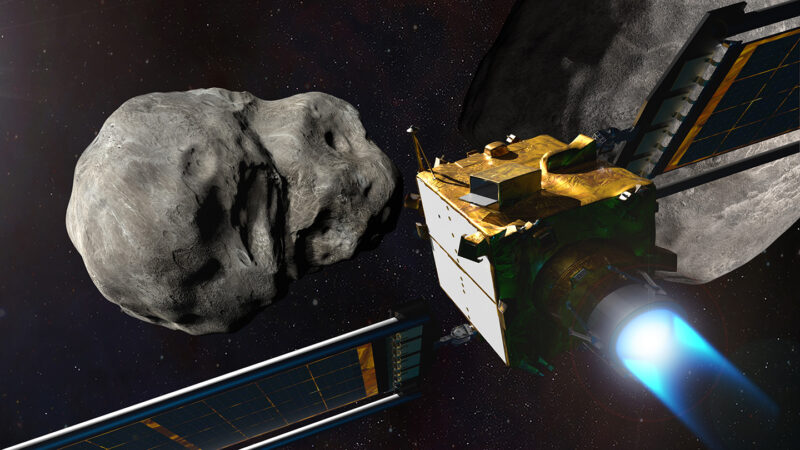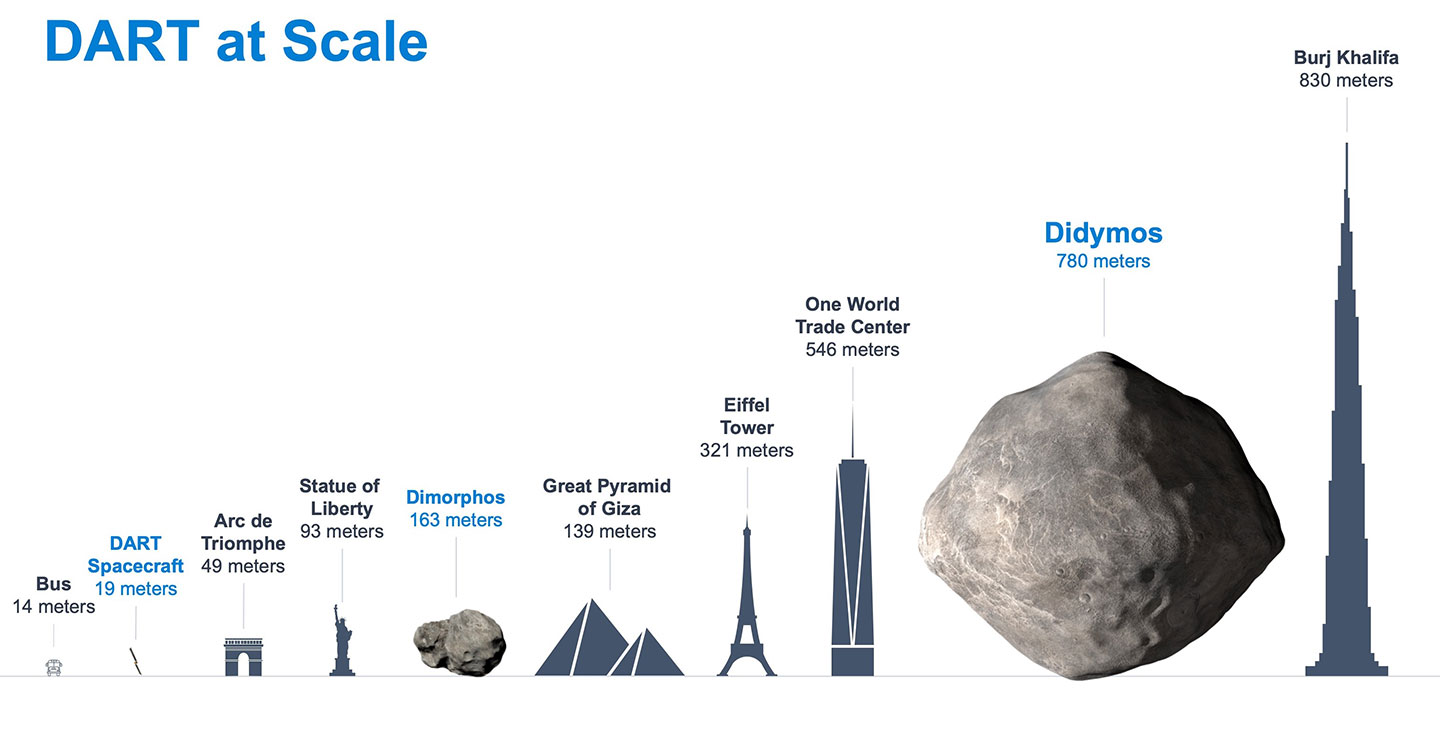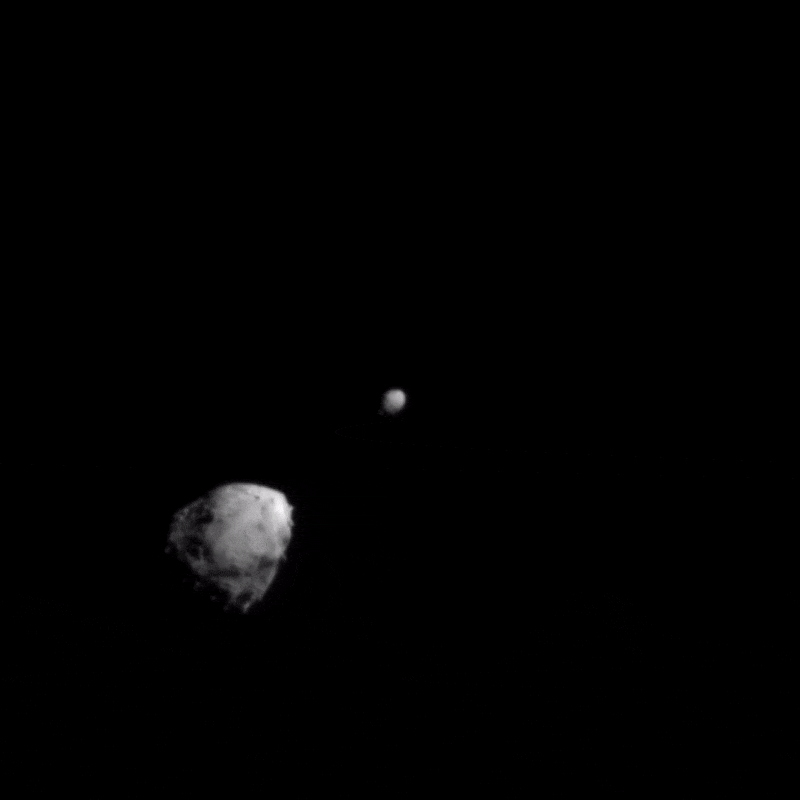NASA’s DART spacecraft crashed into an asteroid — on purpose
It is the world’s first attempt to change a space rock’s motion with such a collision

After traveling about 11 million kilometers, NASA's DART spacecraft closed in on its target: the asteroid moonlet Dimorphos. This image of the space rock was taken by DART just seconds before the spacecraft smashed into it.
NASA
Share this:
- Share via email (Opens in new window) Email
- Click to share on Facebook (Opens in new window) Facebook
- Click to share on X (Opens in new window) X
- Click to share on Pinterest (Opens in new window) Pinterest
- Click to share on Reddit (Opens in new window) Reddit
- Share to Google Classroom (Opens in new window) Google Classroom
- Click to print (Opens in new window) Print
Mission control rooms rarely celebrate crash landings. But the collision of NASA’s DART spacecraft with an asteroid was a smashing success.
On September 26, DART hurtled into the asteroid Dimorphos. This space rock orbits a larger asteroid named Didymos. DART’s goal was to bump Dimorphos slightly closer to Didymos. This should shorten its 12-hour orbit around Didymos by several minutes.
DART, short for the “Double Asteroid Redirection Test,” is the world’s first attempt to change an asteroid’s motion by ramming a spacecraft into it. Dimorphos and Didymos do not pose a threat to Earth. But if the DART mission works well, that could show it’s possible to purposely knock an asteroid off course. This strategy could be used to protect the planet if a big asteroid is ever found headed for Earth.

Prepping for an asteroid apocalypse
“We don’t know of any large asteroids that would be considered a threat to Earth that are coming any time in the next century,” says Angela Stickle. A planetary scientist on the DART team, she works at the Johns Hopkins University Applied Physics Laboratory. That’s in Laurel, Md. “The reason that we are doing something like DART,” she notes, “is because there are asteroids that we haven’t discovered yet.”
Astronomers have found almost all asteroids in the solar system that are kilometers (miles) wide, says Jessica Sunshine. Such jumbo asteroids could end civilization if they hit Earth. But the solar system also contains many smaller asteroids. Say, ones about the size of Dimorphos — about 160 meters (525 feet) across. “We only know where about 40 percent of those are,” Sunshine says. “And that is something that, if it did hit, would certainly take out a city.” Sunshine is a planetary scientist on the DART team. She works at the University of Maryland in College Park.
Dimorphos is a safe asteroid to give an experimental nudge. Before DART’s impact, it was not headed toward Earth. And DART cannot have hit it hard enough to send it toward Earth. After all, the spacecraft weighed only about as much as a couple of vending machines. Dimorphos is thought to be nearly as hefty as an Egyptian pyramid.

Sacrificial spacecraft
DART met Dimorphos near the asteroid’s closest approach to Earth, about 11 million kilometers (7 million miles) away. Until the final stretch of its journey, DART could only see the space rock’s parent asteroid, Didymos. Dimorphos was too small. But about an hour before impact, DART finally detected Dimorphos in its field of view. Using its onboard camera, the spacecraft steered itself toward its target and slammed into the asteroid at about 6.1 kilometers per second (nearly 14,000 miles per hour).
“I was absolutely elated. Especially as we saw the camera getting closer and just realizing all the science that we’re going to learn,” said Pam Melroy after the impact. Melroy is NASA’s Deputy Administrator. “The best part was seeing, at the end, that there was no question there was going to be an impact,” she said. “And to see the team overjoyed with their success.”
DART’s camera feed went dark after impact. But another probe was sent to catch the collision on camera. The Light Italian CubeSat for Imaging of Asteroids rode to Dimorphos aboard DART. It detached from the spacecraft a couple of weeks before impact to watch the event from a safe distance. Its mission was to snap pictures of the crash site and the plume of debris launched into space. On September 27, the Italian Space Agency released the probe’s first picture of the DART crash.
@sciencenewsofficial NASA’s DART spacecraft smashed into the space rock Dimorphos on purpose. It’s the first-ever test of a strategy to deflect a killer asteroid if one is ever discovered. #nasa #dart #asteroid #space #learnitontiktok
♬ original sound – sciencenewsofficial
What’s next?
DART’s impact was supposed to shove Dimorphos into a closer, shorter orbit around Didymos. Telescopes on Earth will now clock the timing of Dimorphos’ orbit to see how well that worked. Telescopes can do this by watching how the amount of light from the asteroid pair changes over time. This reveals when Dimorphos is passing in front of and behind Didymos. That, in turn, shows how fast the smaller space rock is circling the bigger one.

“It’s really a beautifully conceived experiment,” says Mark Boslough. He’s a physicist at Los Alamos National Laboratory in New Mexico who is not on the DART team.
In the coming weeks, dozens of telescopes across the world will keep an eye on Dimorphos. These telescopes are spread across every continent. The Hubble and James Webb space telescopes may also get images.
“It’ll be really interesting to see what comes out,” says Amy Mainzer. This planetary scientist works at the University of Arizona in Tucson. She’s not a member of the DART team. “Asteroids have a way of surprising us,” she says. That’s because views from Earth don’t show everything about a space rock’s chemical makeup and internal structure. So, Dimorphos’ post-impact motion may not quite match expectations.
The DART team will compare Dimorphos’ actual new orbit with their predictions based on computer models. That will reveal how close their models were to predicting the space rock’s real-world behavior. This could help improve models of spacecraft-asteroid smashups. And those models could come in handy if a real killer asteroid is ever found coming toward Earth.






